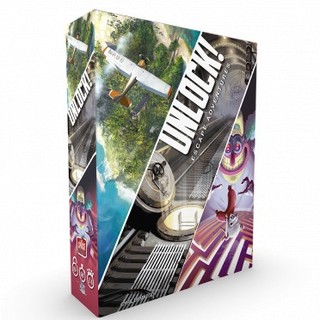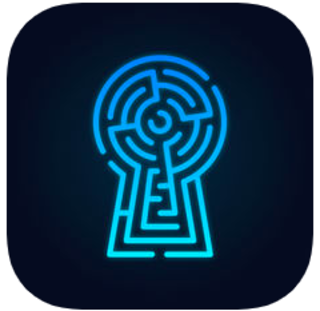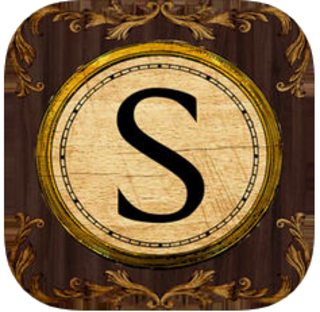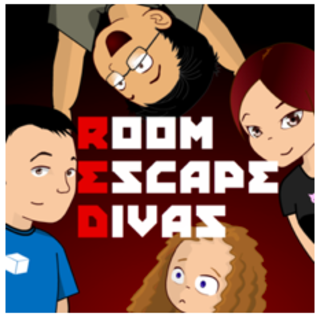


| << Games We Love : A Shakespearean Fiasco | So Says Japan: Christmas and New Years 2019! >> |
From a talk I gave last weekend at a conference in Kobe, Japan, I could see that there is a genuine interest in making and implementing Escape Rooms in ESL and EFL classrooms. Next week on this blog I will share my slides, thoughts and puzzles, but for now, here is a list of resources I introduced at the conference that I think can get educators started on creating their own rooms.

The disruptive media lab's mission statement is to drive innovation in education. They have an extensive article on the steps they recommend educators take to design their own rooms. They present a series of interesting questions that relate to the pedagogy as well as the practicalities of making an effective room. This guides would be designers through the process of making a room.

Breakout Edu has a series of videos on designing immersive educational experiences that are a must-see for would be designers. Although most of their site's content is behind a paywall, the ideas in these videos are applicable to any escape room designs.

Puzzled Pint is a worldwide, monthly event in which people gather to solve a series of puzzles while enjoying good food and drinks at the host bar. Their site is a goldmine of puzzle ideas. They are pretty difficult, so you'll need to adapt them to be suitable for the classroom. The plus point of these puzzles is that they all designed to be print and play.

Escape Team is an app that controls the narrative, progression and hints of a paper-based escape room. The app is free, but the puzzles are contained on PDFs. This means you can print multiple copies of the same escape room which allows it to work for classrooms with large numbers of students. Further 'rooms' are purchasable through the app which, again, you can print multiple copies of. You can even design your own puzzle sheets and upload them to the app through their website.

The best way to get an idea about how to make your own rooms is to play as many as possible. Obviously some people don't live with easy access to escape rooms and the cost can be prohibitive. These out-of-the-box escape rooms are a great alternative. This can give you an idea of how puzzles nest and flow into each other and ideas about what makes a puzzle difficult or easy.
At around $10 - $15 dollars a game, you play multiple of these games for the price of a single live escape room. I recommend the Unlock series as the narrative structure of these games is very strong and many of the puzzles are controlled by a free app. You can try a number of free versions which are downloadable on their website (links below). The Exit series and Journal 29 books are slightly harder overall, but also contain many creative ideas and are well worth a play. If you are thinking of buying these to use directly in the classroom without modification then Unlock is perhaps the best. This is because they are reusable, while the Exit series games can mostly only be played once. For a more detailed review comparing Unlock to Exit check out this review from Shut Up and Sit Down.
Free versions of Unlock:
Tutorial (PDF) (10 minutes, super simple)
5th Avenue (PDF) (30 minutes, easy)
The Elite (ZIP) (60 minutes, normal)
Doo-Arann’s Dungeon (PDF) (30 minutes, easy)
The Temple of Ra (PDF) (60 minutes, hard)
One way I have found to do these in the classroom is too play the first tutorial in the students L1 (many translations available at boardgamegeek) which only takes a few minutes. Once they are on-boarded with the mechanics then it is easy to try the next ones in English only.


There are a couple of AR escape rooms worth your attention. The imaginatively titled Escape the Room : AR and Scriptum AR Escape Room are both fun experiences with great designs that are built to allow multiple people play them at the same time. I think they are both interesting looks at what we can look forward to even more advanced rooms in the future.
The great thing about AR escape rooms is that it offers no limit to the type of puzzles and narratives they can explore. There are some exciting things happening between AR and ESL / EFL at the moment and I hope in the future that we can move towards making some truly great escape experiences with well developed learning outcomes deliberately made for the English learning classroom.


If you want to listen to people discuss the in and outs of escape room design, what works and what doesn't, and how and how not to implement them in the classroom then I recommend either of these two podcasts from Inverse Genius. Games in Schools and Libraries covers a broader range of topics related to games in general but escape rooms are a common topic.

Escape! from Geek and Sundry is a series in which celebrities play escape rooms. Another place to look at to see how fun and creative escape rooms can be, as well as a place to find inspiration for puzzles and themes.
Finally, I recommend going to http://scottnicholson.com/ for a series of papers on escape rooms and how to use them in educational settings. Educators in fields other than ESL / EFL are doing some very exciting things with the escape room format. This paper in particular on using an escape room to teach computer programming is extremely insightful.
Wow, what a list! By no means comprehensive, but a lot to go on and more than enough for people to start making their own rooms. I will be sharing my own escape rooms pretty soon and will also be writing about what I think escape rooms need to work in the ESL and EFL classroom (or any classroom). Stay tuned to this blog for more details. Follow me on Twitter and Tanuki Games on Instagram for more updates. If you are an English Language teacher who has designed or is designing similar things then please get in touch or comment. I'd love to know who else is doing what.
This is part of the ‘Tanuki: Games We Love’ series. This is where we share RPGs, board and card games that we love to use in the classroom, along with lesson plans and adaptations for utilizing the game. We have no affiliation or deals with these companies. These are just games we genuinely think are a worthy addition to your classroom shelves.
| << Games We Love : A Shakespearean Fiasco | So Says Japan: Christmas and New Years 2019! >> |


